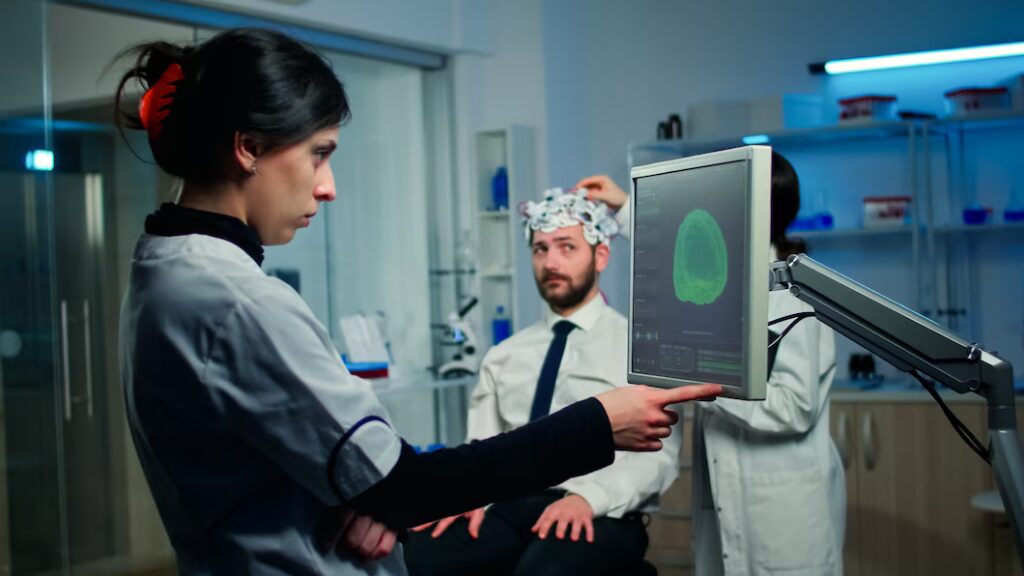Parkinson’s disease (PD) is a progressive neurodegenerative disorder that affects millions worldwide, leading to debilitating motor and non-motor symptoms. Traditionally managed through medications like levodopa, the search for more effective treatments has spurred innovative approaches that promise to enhance the quality of life for patients. From advanced surgical techniques to cutting-edge drug therapies and emerging technologies, the landscape of Parkinson’s disease management is evolving rapidly.
Advanced Therapeutic Strategies

- Deep Brain Stimulation (DBS): One of the most significant advancements in Parkinson’s treatment is Deep Brain Stimulation. This surgical procedure involves implanting electrodes in specific brain regions to modulate abnormal signals that cause symptoms. Recent developments have led to adaptive DBS systems that adjust stimulation in real time based on the patient’s needs, significantly improving symptom control and offering a personalized treatment approach.
- Spinal Stimulation Technologies: Researchers are exploring spinal stimulation as an alternative to traditional DBS. By targeting the spinal cord rather than the brain, this technique aims to improve mobility and reduce tremors without directly addressing the root cause of Parkinson’s. Early studies have shown promise in enabling patients with advanced Parkinson’s to regain mobility, marking a significant step forward in treatment options.
- Innovative Drug Therapies: The pharmacological landscape for managing Parkinson’s is also evolving. New formulations of existing medications aim for continuous delivery, minimizing fluctuations in symptom control and reducing side effects associated with traditional dosing regimens. For instance, continuous subcutaneous delivery systems for levodopa are being tested, which could enhance therapeutic effectiveness and patient adherence.
- Gene Therapy and Antisense Oligonucleotides (ASOs): Gene therapy is gaining traction as a potential game-changer in Parkinson’s management. ASOs are designed to target specific proteins implicated in the disease, such as alpha-synuclein, which aggregates in the brains of Parkinson’s patients. Early trials have shown promising results in animal models, paving the way for future human studies that could lead to disease-modifying treatments.
- Stem Cell Therapy: Stem cell research continues to hold promise for addressing the underlying neurodegeneration associated with Parkinson’s disease. Techniques aimed at replacing damaged neurons or enhancing dopamine production are under investigation, potentially offering a path toward restoring function rather than merely managing symptoms.
- Robotic-Assisted Rehabilitation: Advances in rehabilitation technology, including robotic-assisted therapies and virtual reality systems, are being integrated into treatment plans for Parkinson’s patients. These innovative approaches focus on improving motor skills, balance, and coordination through engaging and interactive exercises tailored to individual needs.
The Role of Technology
Technological innovations play a crucial role in enhancing the management of Parkinson’s disease. Artificial intelligence (AI) and machine learning algorithms are being employed to analyze patient data and optimize treatment plans based on individual responses. Advanced imaging techniques such as diffusion tensor imaging (DTI) MRI provide insights into brain changes associated with PD, aiding early diagnosis and monitoring disease progression.
Conclusion
Innovative approaches to managing Parkinson’s disease are transforming patient care by offering more effective treatments and improving quality of life. From advanced surgical techniques like Deep Brain Stimulation to groundbreaking drug therapies and rehabilitation technologies, these innovations represent a new era in the fight against this debilitating condition. As research continues to advance, there is hope for more personalized and effective strategies that will empower patients and enhance their overall well-being.
FAQs
- What is Parkinson’s disease?
Parkinson’s disease is a progressive neurodegenerative disorder that primarily affects movement control due to the loss of dopamine-producing neurons in the brain. - What are some innovative treatments for Parkinson’s disease?
Innovative treatments include Deep Brain Stimulation (DBS), spinal stimulation technologies, gene therapy using antisense oligonucleotides (ASOs), stem cell therapy, and robotic-assisted rehabilitation. - How does Deep Brain Stimulation work?
DBS involves implanting electrodes in specific areas of the brain that regulate movement; these electrodes deliver electrical impulses to modulate abnormal signals causing symptoms. - What role does technology play in managing Parkinson’s?
Technology enhances management through AI-driven data analysis for personalized treatment plans, advanced imaging techniques for early diagnosis, and robotic-assisted rehabilitation therapies. - Are there any new drug therapies for Parkinson’s?
Yes, new drug formulations aim for continuous delivery systems that improve symptom management while minimizing side effects associated with traditional oral medications. - What is the future outlook for Parkinson’s disease management?
The future looks promising with ongoing research into gene therapy, innovative drug delivery methods, and technological advancements that aim to provide more effective and personalized care options.

